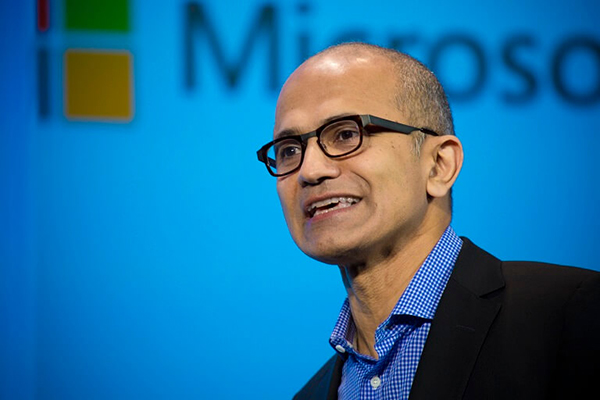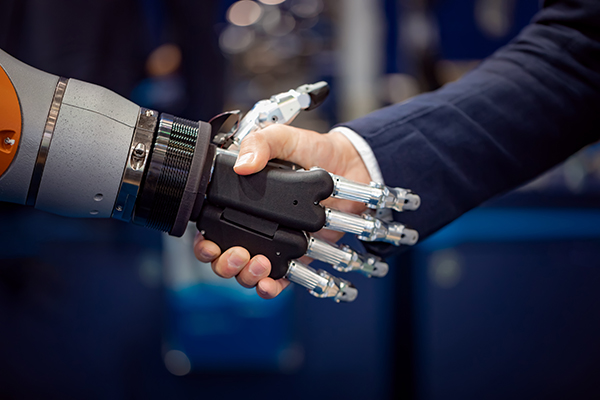As the AI Age takes hold, Microsoft has unleashed an AI strategy that’s as complete and ambitious as any you’ll find from any company in the world. It’s already in place in fast-food restaurants and in manufacturing plants, and Microsoft is ahead of everyone in extending and unifying AI’s capabilities from the cloud to the edge.

But that enormous potential won’t be realized unless AI takes its proper place within the ever-widening set of Azure-centered technologies and services within the Microsoft portfolio.
“AI is going to be one of the trends that is going to be the next big shift in technology,” Microsoft CEO Satya Nadella said at a recent investor’s conference.
“It’s going to be AI at the edge, AI in the cloud, AI as part of SaaS applications, AI as part of in fact even infrastructure.
“And to me, to be the leader in it, it’s not enough just to sort of have AI capability that we can exercise—you also need the ability to democratize it so that every business can truly benefit from it.
“That to me is our identity around AI.”
And Nadella is ensuring that that “AI identity” is inextricably intertwined with the Microsoft Azure cloud, which is the centerpiece of the company’s commercial-cloud business that generated $6 billion in revenue last quarter and $20.8 billion over the past 12 months.
“Let’s take what most people describe as IoT,” Nadella said in a Q&A session at the Morgan Stanley Technology, Media & Telecom Conference. “It’s fascinating to see the workload path, if you will, of these IoT projects, which is let’s take anything that’s on the edge.
“Take a manufacturing context: you’re collecting lots of data, you take that data and you rendezvous it both in the edge, as well as in the cloud. Then once you have a lot of data you reason over that data so that you can do some predictions, because ultimately AI translates into two things, whether it’s some predictive power or analytical power.”
And which of those paths a customer chooses is based on a variety of factors unique to its business, its customers, its processes, and the myriad of alternative scenarios that can pop up in a day.
So an essential element in the rapidly evolving world of AI for business is the ability for businesses to be able to customize it to their specific needs, Nadella said.
“In the last couple of years I’ve seen marked difference in terms of—it’s not just technology for technology’s sake, and that’s why even technology and its evolution is very past-dependent. If you take — you asked in the previous question, what’s differentiated about say our speech service or our vision service—one of the most differentiated aspects of it is the ability to customize it. It’s not just a generic API that you call.

“For example, there are certain fast-food restaurants using our speech service, which is being trained for the ambient noise of drive-throughs. That’s a customized application. So the order entry into the point of sale is that much more accurate.”
As another example, Nadella cited the application of computer-vision customizations on an assembly line to detect defects—and that requires what he called a “tool chain” to convert that piece of elegant technology into a purpose-built business tool.
“So the ability to have a tool chain that makes it possible for businesses to then take their business process and add machine learning and AI and make it that much more productive and that much more efficient is what I think the real innovation is.
“It’s not just having the technology, but to be able to really deliver the deployed solution.”
Central components of that tool chain are Azure and Azure IoT Cloud, a combo that extends Nadella’s vision of a single, unified architecture for everything from AI to IoT to private clouds, public clouds, hybrid clouds and on-premises technologies.
“In this case, let’s say you can predict failure—then right after that you need to translate that prediction into some action,” Nadella explained.
“So then we see growth in something like field service, because you then have to get someone who is going to go fix the thing before it’s broken. And so that ability to take something which is growth in our Edge, the growth in data, to growth in AI tools that are being used for preventive maintenance, to growth in field service, that’s happening at scale today.”
To tie all of those pieces together, Nadella said, requires an end-to-end set of enterprise-software capabilities—what he called the “platform effect”—and the knowledge of how to combine them to deliver optimal business value.
“But is that just AI? Is that just data? Is it just a business application?
“That’s one of the reasons why I like to think about the broader platform effect, as opposed to just the narrow application.”
In Microsoft’s case, trust is an indispensable element of that “broader platform” on which AI-driven business-critical operations will be based.
Here’s how Nadella framed out the issue of trust, extending it from not only moving into some unknown frontiers of AI-driven business but also the consequences can have on business models, competitive dynamics and the very definition of what partnerships are and aren’t.
“The question that every customer—whether it’s a financial services company, whether it’s a retailer, whether it is a manufacturer—is going to ask is, who do I trust? Especially in a world where there’s going to be transfer learning?”
If that trust is placed with the wrong party, Nadella said, the consequences will be dire.
“One of the largest transfers of wealth can happen if you pick your supply chain wrong,” he said.
“If you do not have fundamental trust with the partners you have and the suppliers you have–entrusting them with data which they are going to then help you reason on top of to create AI has to be one of those very trusted partnerships.”
Because it’s precisely that type of reasoning on data that is becoming the new and highest-value IP for businesses looking to deploy AI for true competitive differentiation—who owns that reasoning? Who owns that AI? Who owns the data in it and around it?
“And I think that’s where having this purity of business model which we have which is fundamentally consumption-based or subscription-based—not having all these funky cross-subsidies and marketplace structures and multiple businesses that on one side you compete with and on the other side you partner with,” Nadella said in a not terribly veiled dig at Amazon, whose wide-ranging business empire puts it in direct competition with many of the business that are using or could be using its cloud services.
“I just think most people are going to see through it.”
That transparency is the by-product of C-level execs recognizing they need to regard AI as an indispensable and highly strategic business asset, rather than as some esoteric plaything isolated in some nerdy corners of the company.
“Recently I talked to a bank CEO and one of the first questions he asked me, which was pretty stunning to me, is, ‘What’s the state of your RL?’
“And I said, wow, this is a bank CEO asking about reinforcement learning! And that means there is a real awakening at the top about where AI is and the trajectory of where AI is going.
“So, therefore, I fully expect them to be asking the hard questions of which technology partners can they really trust whose long-term interests are aligned with their long-term interests.”
And of course, as with all current and future strategic issues at Microsoft, the company’s entire AI play is elegantly linked with the Azure cloud.
With AI, Nadella said, “You need not only inference capability at the edge, but for the new workloads, we need even training capability in the edge, because the amount of data that’s going to get generated that needs to be reasoned over in real time to take action will require compute to be where storage is.
“So when I think about what we’re building, when we describe our hybrid computing architecture or this intelligent cloud/intelligent edge, I feel we’re, in fact, leading that change today.
“Now beyond that, I think what you see is the secular market demand for this type of computing. As every industry in every country is being digitized, the one thing that they need more is that core infrastructure,” Nadella said.
“And we participate at the core infrastructure both on the edge and in the cloud, we participate in the data layer, we participate in a lot of the higher-level PaaS services, whether they be AI or others.
“Therefore we feel we not only have a differentiated point of view, we have execution that is differentiated in the marketplace today.”
As businesses jump to the cloud to accelerate innovation and engage more intimately with customers, my Cloud Wars series analyze the major cloud vendors from the perspective of business customers.




